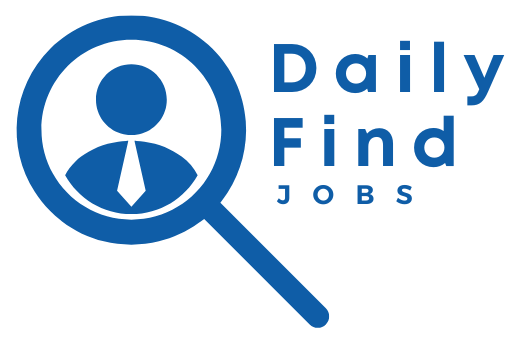Building a high-performing team is crucial for achieving organizational success. Assembling the right individuals, creating a culture of collaboration, and setting clear goals are fundamental steps. This article explores strategies such as identifying key talent and fostering continuous improvement, to equip your team for top performance.
Identifying Key Talent for Your Team
Selecting the right individuals for your team is a pivotal step in building a high-performing unit. Start by evaluating the skills and experiences necessary for your team’s success. Consider both hard and soft skills, as technical expertise must be complemented by strong communication and problem-solving abilities.
When identifying key talent, think about diversity of thought and background. A team with varied perspectives has a competitive advantage as it can approach problems creatively and from multiple angles. Moreover, assess potential candidates’ cultural fit with your team. Ensure their values align with the team’s mission and vision.
Utilize assessment tools and structured interviews to uncover candidates’ capabilities and their potential for growth. Incorporate scenarios or role-specific challenges in your evaluation process to observe how candidates apply their skills in realistic situations. This can provide deeper insights into their problem-solving abilities.
Additionally, consider the importance of emotional intelligence in potential team members. This trait aids in managing relationships, leading to more effective collaboration and conflict resolution within the team.
Lastly, remember that key talent can emerge through different channels. Encourage internal mobility by identifying current employees with leadership potential who can be trained and developed to fulfill key roles, thus maximizing their contribution to the team’s success.
Fostering a Collaborative Culture
Collaborative culture plays a crucial role in the functioning of high-performing teams. It creates an environment where team members feel valued and motivated to contribute their best. To achieve this, it is essential to promote open communication and trust among team members.
Encouraging open communication involves creating safe spaces for sharing ideas and providing feedback. Team members should feel comfortable voicing their opinions without fear of judgment or backlash. This openness fosters a sense of belonging, which enhances teamwork and cooperation.
Another key aspect of fostering a collaborative culture is building trust. Trust is the foundation of any successful team. It encourages members to rely on each other and to collaborate without hesitation. Leaders can build trust by being transparent and setting clear expectations. Leading by example also plays a significant role; when leaders demonstrate sincerity, team members are likely to follow suit.
Furthermore, collaboration thrives on diversity. By bringing together people with different backgrounds, skill sets, and perspectives, a team can approach problem-solving with a broader range of solutions. This diversity should be celebrated and nurtured to maximize the potential of the team.
Implementing team-building activities can further enhance collaboration. Activities like workshops or group projects often strengthen bonds and make collaboration more natural. Additionally, recognizing and rewarding collaborative efforts can motivate team members to continue working together effectively.
In conclusion, fostering a collaborative culture involves open communication, trust-building, diversity appreciation, and consistent team-building efforts. These elements combined can significantly improve a team’s performance, making it a high-performing one.
Setting Clear Goals and Expectations
To build a high-performing team, setting clear goals and expectations is essential. Goals act as a roadmap, guiding team members towards desired outcomes and ensuring everyone works in harmony. Define objectives that are specific, measurable, achievable, relevant, and time-bound (SMART). This clarity helps each member understand their responsibilities and how their role contributes to the bigger picture.
Communicating expectations openly reduces confusion and aligns efforts. Use regular team meetings to discuss individual roles and collective objectives. Encourage team members to ask questions and provide feedback when necessary. This two-way communication ensures everyone is on the same page.
Documenting these goals and expectations is crucial. Keep them accessible so team members can refer back whenever needed. This not only reinforces the priorities but also acts as a constant reminder of the team’s direction and purpose.
Motivate your team towards these goals by recognizing achievements. Whether big or small, acknowledging progress boosts morale and encourages continued effort.
Finally, regularly review and adjust goals to keep them relevant. The business environment is constantly changing, and so should your team’s objectives. Stay agile and ready to adapt to new challenges.
Continuous Improvement and Feedback
Embracing a culture of continuous improvement is essential for any high-performing team. This involves regularly assessing team processes, analyzing outcomes, and identifying opportunities for refinement. Encouraging team members to provide open and constructive feedback can foster an environment of trust and transparency, which drives higher engagement and performance.
Teams should set aside time for regular post-project reviews and retrospectives. These sessions should focus on team achievements, areas needing improvement, and feedback on both group and individual performance. The goal is to ensure that everyone understands both the successes and challenges faced during the project.
Providing training and resources for team members to develop their skills is another way to promote continuous growth. This can include workshops, online courses, or mentorship programs. Encouraging self-assessment and personal goal setting can also help team members take ownership of their development.
Utilizing tools and technologies to collect data on team performance is beneficial. These insights can identify trends and patterns, guiding discussions for improvement. Regular check-ins with team members ensure that progress and feedback are aligned with the team’s overall goals.
Fostering a feedback loop where everyone feels comfortable sharing their perspectives without fear of criticism, and where all feedback is treated as a tool for growth, leads to a more agile and responsive team. This, in turn, helps to build a resilient team that consistently evolves and adapts to challenges.


